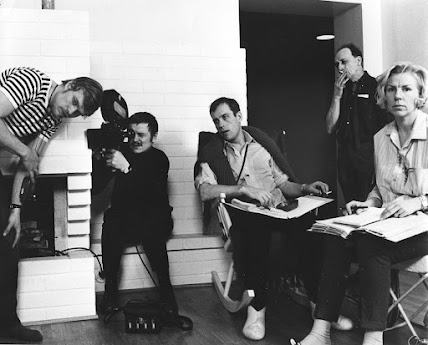 |
| Sixtynine (1969) |
As a part of tribute to Jörn Donner, Sixtynine plays (on 35mm) at London's Closeup Film Centre on January 14, 2021. - EK
When a working woman learns of her part-time hockey referee husband's infidelity, she takes her gynaecologist's advice, to "take a lover", seriously and ends up sleeping with him.
This sex comedy, Jörn Donner's second Finnish feature after four films made in Sweden, was deemed too scandalous even for Finnish society in the late 1960s. It continues some of the themes the director had previously explored in Black on White (1968) and with its fluent use of fast cutting and motion, fantasy sequences and documentary style camerawork, it could be seen as Finland's response to the Swinging Sixties, as the decade was coming to a close.
As well the title's allusion to the year, Donner (who himself appears playing the role of the dispassionate gynaecologist) says the film is called Sixtynine because the relationships in the film have turned upside-down – despite some Finns feeling near certain that some "immoral sexual acts" were meant to be promoted by the film.
 |
| Jörn Donner (middle) on the set of Sixtynine |
Donner, like his mentor and friend Ingmar Bergman (about whom he wrote a book), shows a feeling of being closer to women, adopting a female perspective in the story. The playful shifting of gender stereotypes found here, however, is something Bergman never bothered with.
Using a circular narrative, Donner shows as much fascination with surfaces (modernist interior spaces, leftist chic, plenty of pop and rock music) as with the inner feelings and dilemmas of the characters, as a generation living the same lifestyle as the one before it suddenly discovers that it no longer suits their psychological exigencies. Hence a comedy of gender identities is born. The only character with his four feet on the ground is a dog, who shares almost the same amount of screen space as the humans. — Ehsan Khoshbakht

No comments:
Post a Comment